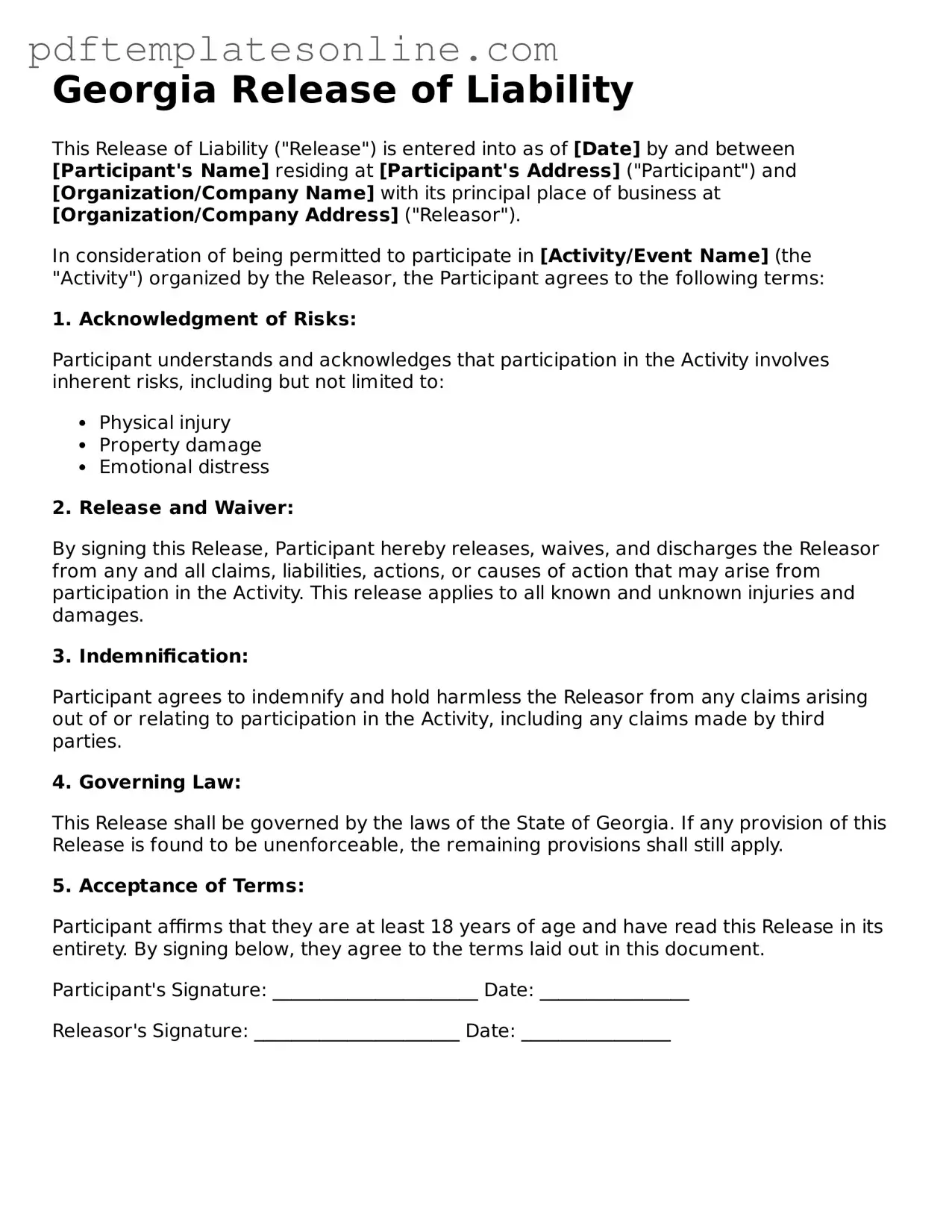Filling out a Georgia Release of Liability form can seem straightforward, but many individuals make common mistakes that can lead to confusion or even invalidate the document. One frequent error is failing to read the form thoroughly before signing. Understanding the implications of the release is crucial. It’s important to know what rights you may be waiving.
Another mistake is not providing complete and accurate information. Omitting details such as your full name, address, or the specific activity involved can create problems later. If the form lacks clarity, it may be difficult to enforce the release in case of a dispute.
Many people overlook the importance of including the date. A signed form without a date may raise questions about its validity. The date establishes when the agreement was made, which can be vital in legal situations.
Another common pitfall is not having the form witnessed or notarized when required. While not all releases need a witness, some situations do. Failing to follow these requirements can render the release ineffective.
Additionally, individuals sometimes misunderstand the scope of the release. They might believe they are protected from all liability when, in fact, the release may only cover specific activities or risks. It’s essential to understand what is being released.
People often forget to check for any additional clauses or conditions. Some releases may contain specific terms that limit their effectiveness. Reading the fine print can reveal important information that could impact your rights.
Using vague language is another mistake. If the release is not clear about what risks are being waived, it may not hold up in court. Precise language helps ensure that everyone understands the terms of the agreement.
Sometimes, individuals sign the form without fully understanding the risks involved. It’s crucial to be aware of what you are agreeing to. If necessary, seek clarification before signing.
Additionally, failing to keep a copy of the signed release is a common oversight. Having a record of the signed document can be invaluable if any issues arise later. Always make sure to retain a copy for your own records.
Finally, some people neglect to consult with a legal professional when in doubt. While it may seem unnecessary, getting legal advice can help clarify any uncertainties and ensure that the release is properly completed. Taking these steps can save time and trouble in the long run.
